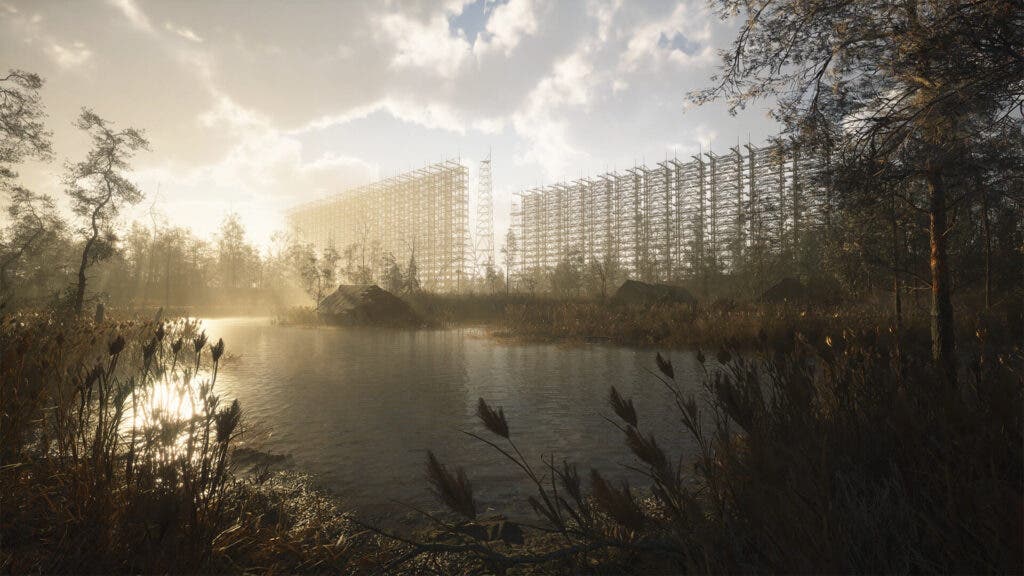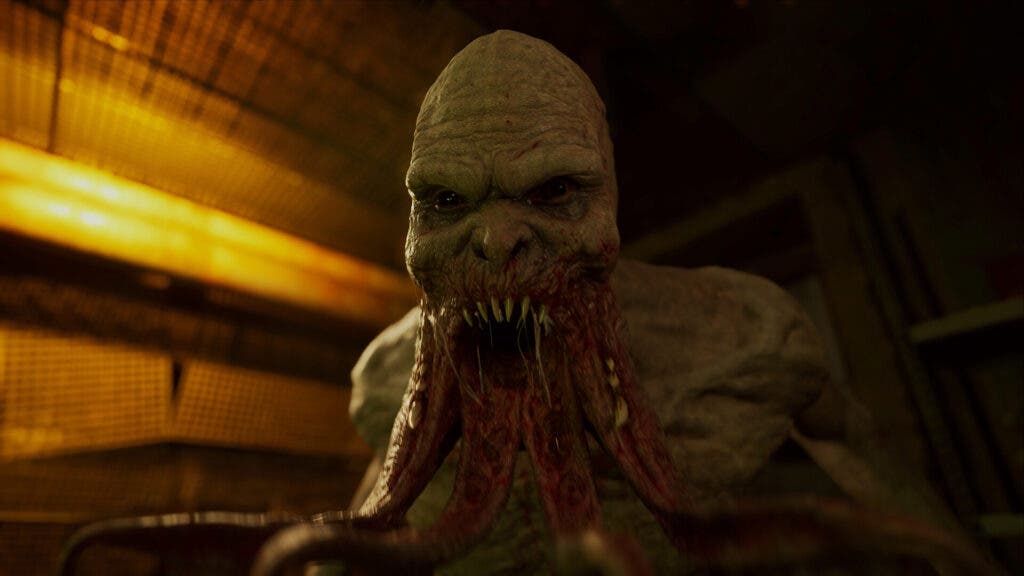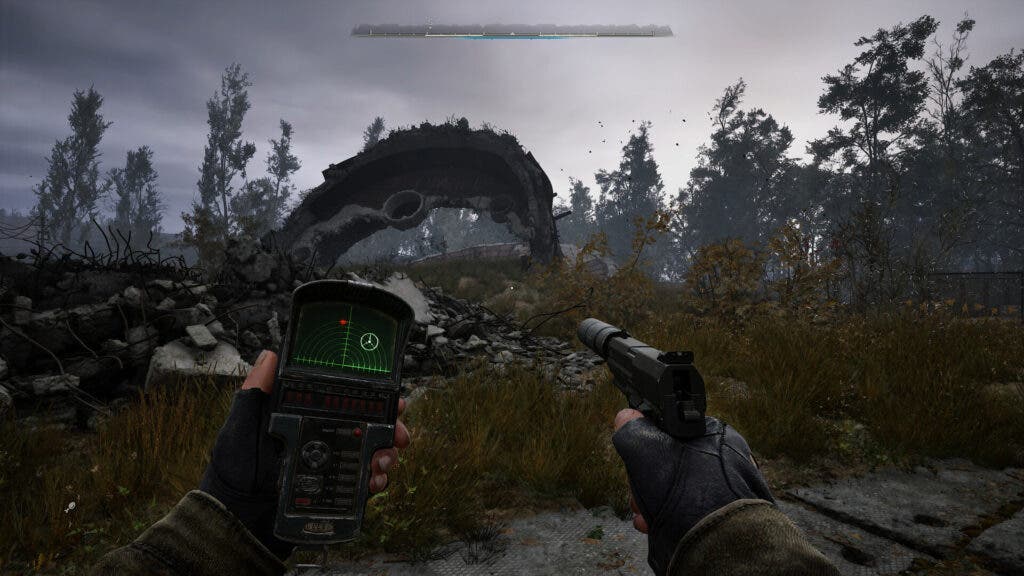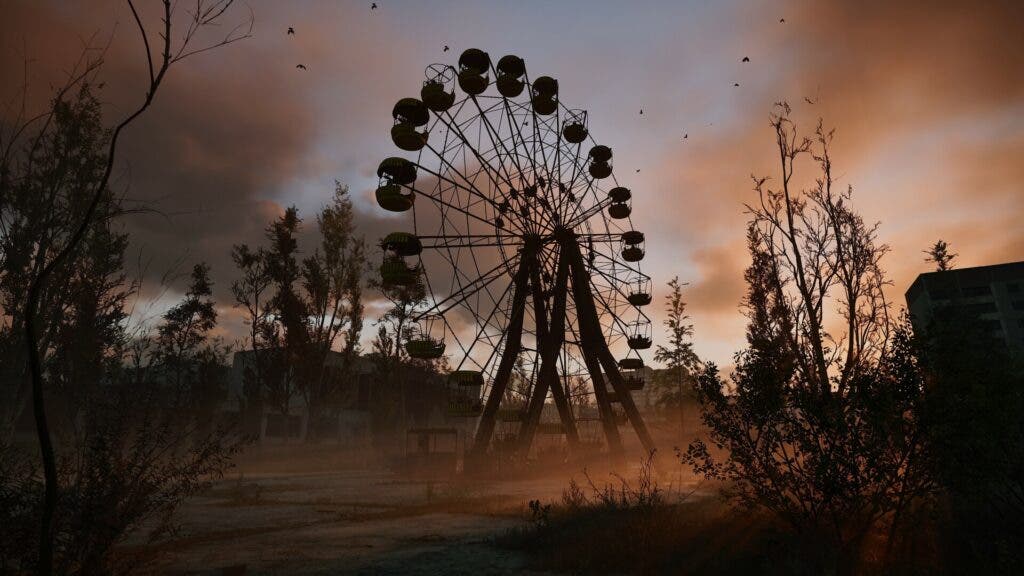S.T.A.L.K.E.R. 2: Heart of Chornobyl is a brilliant game, marred by only a few issues. Despite it being a sequel, it doesn’t require familiarity with the series as is it’s both a continuation and entry point for all players. “S.T.A.L.K.E.R” actually is an acronym, and it stands for Scavengers, Trespassers, Adventurers, Loners, Killers, Explorers and Robbers – and you will be all of these things in a single playthrough. It’s an immersive, surreal, and utterly fantastic game that blurs the line between first-person shooter and role-playing game that eschews all the conventions you might be used to. Against all odds, S.T.A.L.K.E.R. 2: Heart of Chornobyl is here, and the adventure within the zone is a great one that must be played.

Editor’s Note: This was reviewed up to Patch 1.0.2
My history with the S.T.A.L.K.E.R games goes as far back as the series itself. I played through the original three games when they released, where I instantly fell in love with its brutal difficulty, endearing jank, and incomparable sense of place. Through mods, I experienced enhanced graphics, bug fixes, and improvements to core mechanics through subsequent replays. In recent years I’ve played the standalone S.T.A.L.K.E.R Anomaly mod that completely revamped the entire experience, and still utilized (a now heavily modified) X-Ray Engine that the series ran on. It improved on every aspect of the original, and combined all the maps from each of the three games: S.T.A.L.K.E.R.: Shadow of Chernobyl, S.T.A.L.K.E.R.: Clear Sky, and S.T.A.L.K.E.R.: Call of Pripyat. Then came a modpack for the Anomaly mod itself in G.A.M.M.A., which once again transformed the game, made the game look like a modern release, and made it feel like a seamless survival experience. So going into this sequel, I really had to reset my expectations and unlearn mechanics that mods had added and weren’t part of the core gameplay. Not only did I do that, but I have been blown away by what S.T.A.L.K.E.R 2 does.
The Chornobyl Exclusion Zone, or “The Zone” as it’s more affectionately referred to has distinct locations once separated by loading screens in the older games are now one giant open-world to explore. The map has been slightly rearranged for those familiar, and areas are now much larger than they once were. You’ll visit familiar locations like Garbage, Cordon, Swamps, and Yantar, but there’s new locales like Cooling Towers, Lesser Zone, and others that help freshen things up. It’ll take you anywhere from 30 to 40 hours to finish the main story, but there’s dozens of hours of side quests, activities, artifact hunting, and exploring to do.


As the story goes, you play as Skif, a man forced from his apartment by an artifact that set it ablaze. In hopes of learning more about its origins, and why it landed so far out of the Zone, Skif enters to get these answers. Along the way he is ambushed and betrayed almost immediately, helping set the tone of what to expect in this journey. From there, the game is what you make it. You will be given many choices, which can take you down various paths and lead to different endings based on those choices. I highly recommend playing the game using Ukrainian voices, with English subtitles – it’s really the only way to play this authentically and with better voice acting.
The game’s tutorial is the trope of making you powerful, and then stripping you of everything you collected. Even the first combat encounter with humans is a bit too easy on the normal difficulty. There are three difficulties to play on: Rookie, Stalker, and Veteran. Regardless of the skill chosen, this is a game that’s not afraid to kill you. To add insult to injury, the game keeps a track of how many times you’ve died, regardless if you revert to a previous save.


There are simple systems you’ll have to keep track of. Things like health and stamina are expected, but you will have to manage hunger (but not thirst), as well as keep an eye on radiation levels. It’s all easy to manage, and the hotkeys you can slot each of the respective items into make it easy. I don’t dislike the change, but it’s different. In the older games, you could hit F1 through F4 for healing or food items. Now you hit or hold F1 between two items, and hit or hold F3 for another two items. I actually like it, and have already rewired my brain around the difference. If you’re used to traditional first-person games, managing extra resources outside of a typical survival game will offer a deeper experience.
Unfortunately there are some things I find to be missing in the game that hope come at some point – if not officially, then perhaps through mods (which are already popping off). Firstly, there’s a lack of NVGs, a core piece of equipment once you get to the mid-game of the original series, seems to be a big miss here as some areas are just too dark and your flashlight on your stalker just doesn’t provide enough light. When looting enemies, there’s no way to know what faction they were a part of, or seeing a little portrait of their appearance, which gave a lot a personality and connection to who you gun down. Lastly, there’s no binoculars to scout areas for enemies, mutants, and other hazards. Perhaps the most glaring problem is the implementation of “A-Life 2.0”, an artificial life system where all NPCs have lives, quests, and things to do based on a schedule. It’s something that existed in the prior S.T.A.L.K.E.R, and does seem woefully broken here. As a result, it makes the world feel rather empty and uneventful, the game will spawn things in nearby to the player, but it doesn’t feel anywhere near like this is a place that exists without you in it. Thankfully GSC Game World has acknowledged it is not working correctly, and will be fixed in a future patch – and hopefully everything else in due time.

This is a first-person shooter after all, so there’s 30 weapons you’ll shoot. You’ll have your choice of various pistols, shotguns, SMGs, assault rifles, marksman rifles, and sniper rifles. Combat is not run-and-gun, it’s tactical and methodically paced to be purposefully tough. You’ll always want to be behind cover, and lean out to take careful shots. When up close, you can spray a full magazine to ensure a swift death, but a carefully placed headshot regardless of weapon will just about always ensure a clean kill. Stealth can be utilized to sneak past patrols, and with your knife equipped, can silently take down someone. You can then grab their body, and hide it or loot it in a safer location.
Besides completing missions, artifact hunting is one of the other ways to make money in this game. You’ll be given a detector and bolts, and there are different detectors of various quality. Your progression in the game as well as the different regions will dictate how you get access to better gear. Ultimately, the detector will point you towards an artifact, and you’ll have to avoid anomalies to acquire them. Artifacts can carry properties of protection from various hazards or better yet, provide buffs to your gameplay. For instance I’m wearing an artifact that automatically stops bleeding if I get cut so I don’t have to use bandages. Another will make it harder for enemies to detect me. My favorite one is where it makes bullets less damaging, especially when I’m standing still.


You’re introduced to a bloodsucker in the prologue; and while they were once a rare, tough enemy before, you better get used to seeing them, they’re everywhere now. There are pseudo dogs which spawn clones that are just decoys, and finding the real one is the only way to stop the threat. Then there’s the poltergeist, which can take control of objects and throw them at you at great personal risk to your health if not stopped soon. The controller is one of the more dangerous enemies who will psychically damage you, leading you to go more and more insane the longer he stays alive. While in The Zone, you’ll have to avoid emissions, these are events where the environment becomes psychically and radioactively too intense to be out in, and you must take shelter until it dissipates. This is where artifacts are made, and replenished if you’ve already picked over an area.
Like its predecessors, there are manual saves, auto saves, and quick saves. You are in full control on where and how you save, and can revert to prior saves to make different or better choices, or simply replay a particular combat encounter in different ways to see how much you can mess with the enemies. It seems silly to praise autonomy in ways to save in a game, but it is a rarity, and should be celebrated for its inclusion by GSC Game World.

S.T.A.L.K.E.R. 2: Heart of Chornobyl is one of the most immersive games I’ve ever played, this is mainly due to the fictional depiction of a real place. The game features a dynamic weather system complimented by a day/night cycle, along with the aforementioned emissions that will have you running for cover. But there’s nothing like approaching an enemy base under the cover of night, only to be temporarily exposed by the flash of lightning but then covered by the crash of thunder as you silently pick off guards.
To keep track of everything in the game, you’ll have PDA to reference your quests, and more importantly the map to plot out where you want to go, and what you want to do. I love how everything has an animation, from healing to eating, and even pulling out your backpack to look at your inventory. There’s so much attention to detail here.

I was able to get a consistent 70-80fps without DLSS enabled, but had enabled Frame Generation. Eventually I messed with other settings, and turning on DLSS while using DLAA produces 2 less fps, but I no longer had the ghosting that TAA produced with DLSS off. I find the performance to be acceptable, and finding a DLSS setting that will give you higher framerates is recommended.
I miss the X-Ray Engine for the uniqueness to the visuals, and even its jank, but Unreal Engine 5 is also a great fit here. Everything just looks incredible, and the inclusion of ray tracing from Lumen is just stunning and adds so much here. While I never had any issues with the game, but having to compile shaders each time I start the game is a bummer.
My PC Specs:
– Microsoft Windows 11 Pro
– Intel Core i9 13900K @ 5.8GHz
– ASUS ROG RYUJIN II 360 ARGB AIO Liquid CPU Cooler
– G.SKILL TRIDENT Z5 6000MHZ 64GB (32×2) DDR5 RAM
– ASUS ROG Strix GeForce RTX 4080 16GB GDDR6X
– WD_BLACK SN850X M.2 (4 TB)
– LG UltraGear 34GP950B-G (21:9 Ultrawide @ 3440×1440)

Through COVID-19, an invasion, and a war, GSC Game World capture the soul of the S.T.A.L.K.E.R. series wonderfully and shows the heart of those who made it. S.T.A.L.K.E.R. 2: Heart of Chornobyl has so much to love, and features a thoroughly engrossing open-world, fantastic quest design which can be approached in a manner of ways, and gunplay that is unmatched. While the core game is something I will be replaying for years to come, I’m equally excited for the mods and spin-offs that will give us another 15 years of new experiences to have and share. S.T.A.L.K.E.R. 2: Heart of Chornobyl is a game like no other, and even with its issues, doesn’t stop it from being my Game of the Year.
A Steam code was provided by GreenManGaming for review purposes

